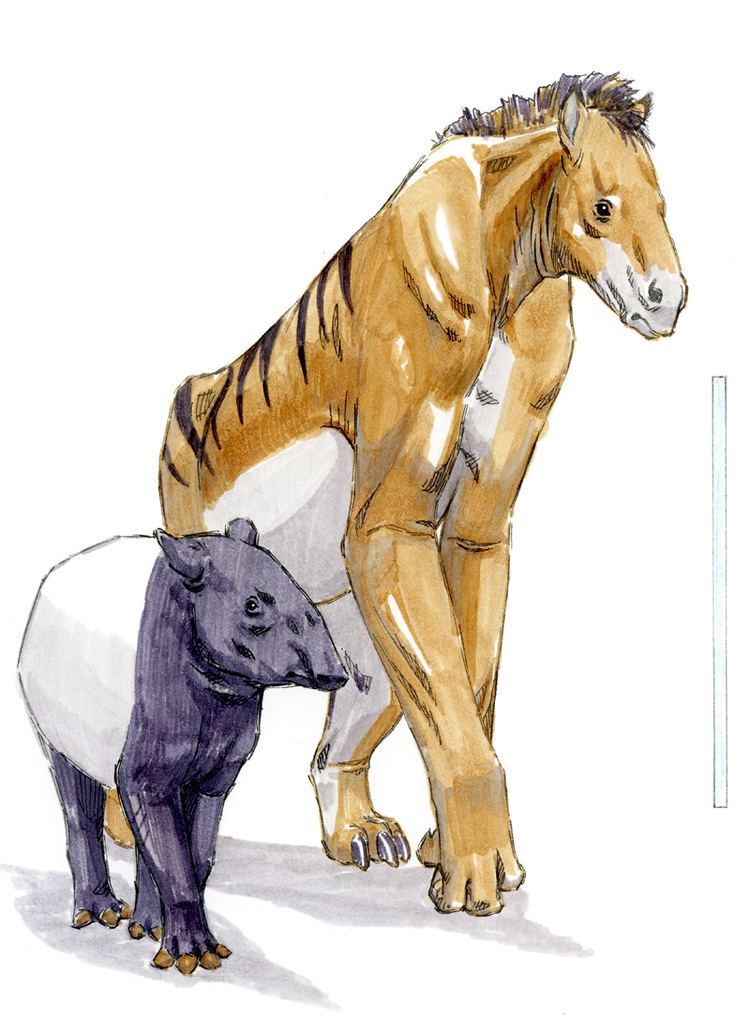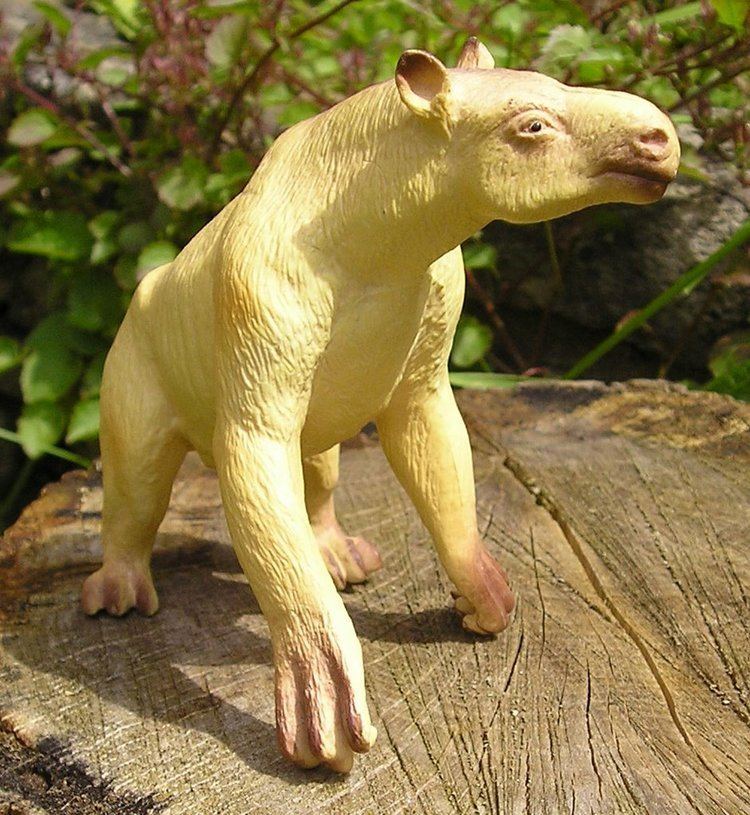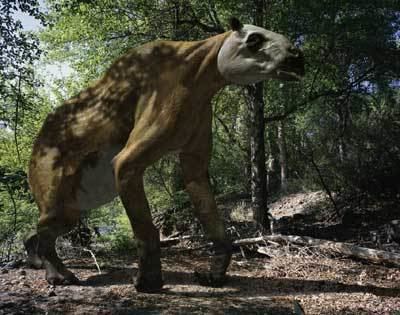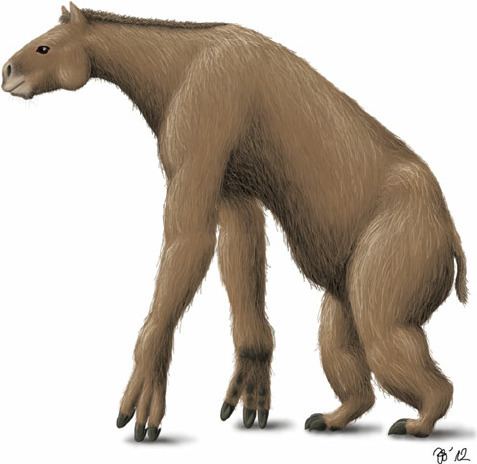Kingdom Animalia Phylum Chordata Rank Family Latest fossil record Early Pleistocene | Scientific name Chalicotheriidae Higher classification Odd-toed ungulate Order Odd-toed ungulate | |
 | ||
Lower classifications Chalicotherium, Moropus | ||
How to pronounce chalicotheres
Chalicotheres (from Greek chalix, "gravel" + therion, "beast") were a group of herbivorous, odd-toed ungulate (perissodactyl) mammals spread throughout North America, Europe, Asia, and Africa during the Middle Eocene to Early Pleistocene subepochs living from 46.2 mya—781,000 years ago, existing approximately 45.519 million years.
Contents

They evolved around 46 million years ago from small, forest animals similar to the early horses. Many chalicotheres, including such animals as Moropus and Chalicotherium, reached the size of a horse. By the late Oligocene, they had divided into two groups: one that grazed in open areas and another that was more adapted to woodlands. They died out around 781,000 years ago, Nestoritherium being the most recently dated chalicothere. Chalicotheres are related to the extinct brontotheres, as well as to modern day horses, rhinoceroses, and tapirs.

Description

Unlike modern perissodactyls, chalicotheres had long forelimbs and short hind limbs. Consequently, chalicotheres probably moved with most of their weight on their short, strong hind legs. Their front legs had long, curved claws indicating they knuckle-walked like giant anteaters today. Fossil remains have shown thick, developed front knuckles, much like gorillas. It was once thought that the claws were used to dig up roots and tubers, but the wear on the claws and teeth do not suggest that they dug or ate dirt-rich foods such as tubers. The chalicotheres probably used their claws to strip vegetation from trees and to forage for food.

Chalicotheres did not have front teeth in their upper jaw, and their back teeth show little wear, suggesting that they probably were selective browsers. It used its long forearms and curved claws to hook down leafy branches in the wooded savannahs in which it lived.
Cryptozoology
Some cryptozoologists have hypothesized that the (supposedly carnivorous) cryptid from Africa, the Nandi Bear, could be a chalicothere.


